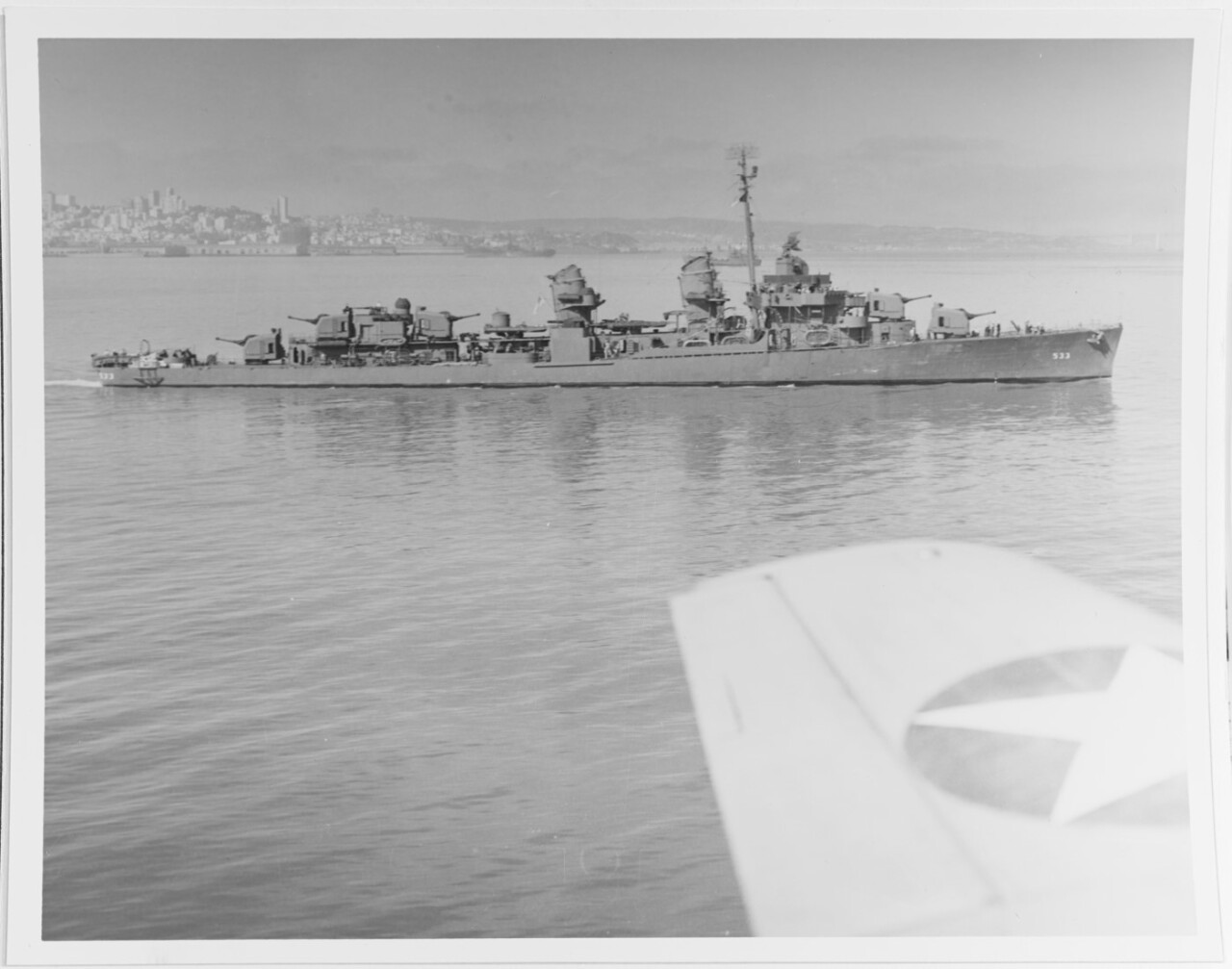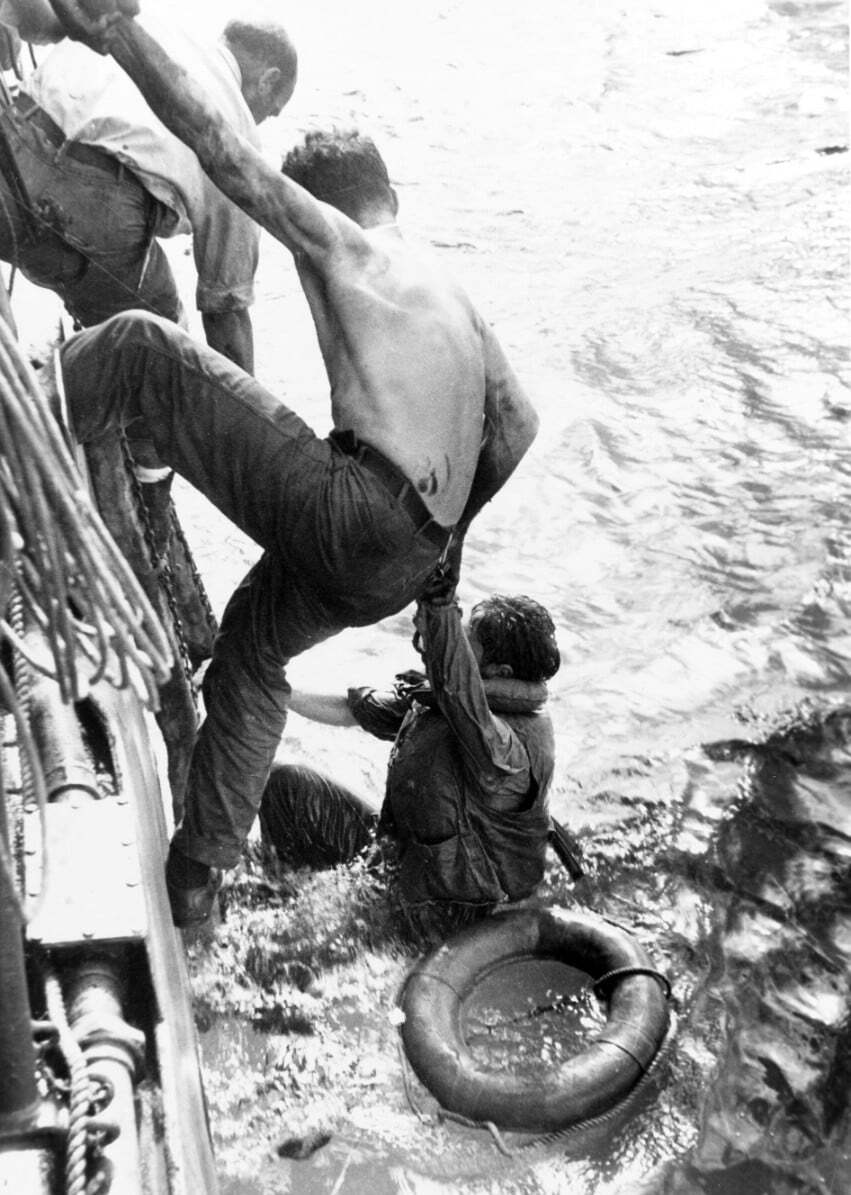HENRICO, Va. -- Homes in along Balmoral Avenue stand nearly 9,000 miles from the Philippine Sea, but to the man who lives in one house, the water feels so close he can almost taste it.
“It was terrible. It was terrible,” said Walter Gammon. “I didn’t do too much sleeping that night. I’ll tell the world that.”
Gammon might be the last person cut out for sea duty. The Danville native grew up working the fields with his 14 siblings, and he doesn’t know how to swim.
“Sixty acres. We had a 60-acre farm,” said the 96-year-old. “Raised tobacco. We had tobacco. I knew how to change a wheel on a wagon.”
Yet, he joined the U.S. Navy during WWII at 19-year-old. “When I shipped out I was on the U.S.S. Hoel.”
On October 25, 1944, Gammon and his shipmates face insurmountable odds. During the Battle of Leyte Gulf, the U.S.S. Hoel is pummeled by superior Japanese forces. The destroyer was sitting dead in the water.

“We were doing the best we could,” said Gammon. His ship was sinking, and men were dying all around him.
“He took the shot and flesh from the wound fell on my shoe,” recalled Gammon.
The farm boy from Virginia had a decision: stay on the crippled ship or leap into the ocean.
“I found half a life jacket. I put it on, and I made out on my own. I jumped off the bow of the ship,” said Gammon.
The teen, who can’t swim, claws for air until a shipmate pulls him to a raft.
“Less than 10 minutes after I jumped ship, the Hoel was gone. I saw it go down,” he said. “I looked back and it was all gone.”
But Gammon’s situation goes from bad to worse.
“I felt like I lost my home and the few friends I made,” he said. “Everything was quiet.”
Survivors expect to be saved that morning, but rescuers don’t come. The sailors are floating on open waters -- alone.
“We were out there all night,” Gammon remembered. “I did everything I could to help the ones on the raft.”
Hours turn to days with little fresh water, and no food.

“When I saw that guy drink sea water I knew he wasn’t going to make it. He was delirious. He just lost it you know?”
One injured crew member dies in Gammon’s arms.
“They had to take his life-jacket off and said a few words. Over the side he went. Sharks were eating him before night,” said Gammon.
Finally, on the morning of the third day -- salvation. American ships pluck Gammon and a few dozen battered sailors from the sea.
“55 of us survivors on three lifeboats,” he said. “All I could think of was I am going home. I survived. I’m going home.”
253 members of the Hoel’s crew perish.
“It was remarkable that anyone was saved,” he said.
Gammon earned a Purple Heart, and the crew awarded a Presidential Unit Citation.

“I think I was more scared than brave,” he said.
After the war, Gammon returned to Virginia, married and had children. He worked for RF&P railroad for more than 30 years.
“I knew by having faith I had a chance,” said Gammon.
96-year-old Walter Gammon. The last known survivor of the sinking of the U.S.S. Hoel.
“I feel terrible every day. But there is nothing I can do. I tried to make the best of it,” he said.
77 years later - memories of his struggle to stay alive and that distant ocean still - wash over him.
“Every day. Every day of life. It was something you don’t forget because it was so real,” he said.
The story of the sinking of the U.S.S. Hoel is detailed in the book “The Last of the Tin Can Sailors.”
Bravery must run through Gammon’s family. His older brother Archer was posthumously awarded the Congressional Medal of Honor for his actions during the Battle of the Bulge.
If you know of someone who should be featured in my “Heroes Among Us” email me at heroes@wtvr.com







